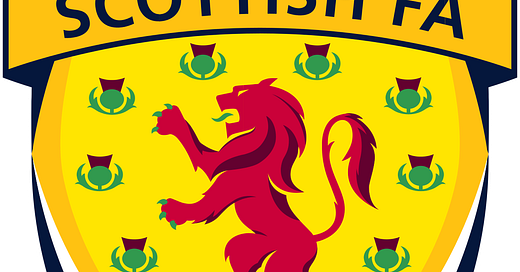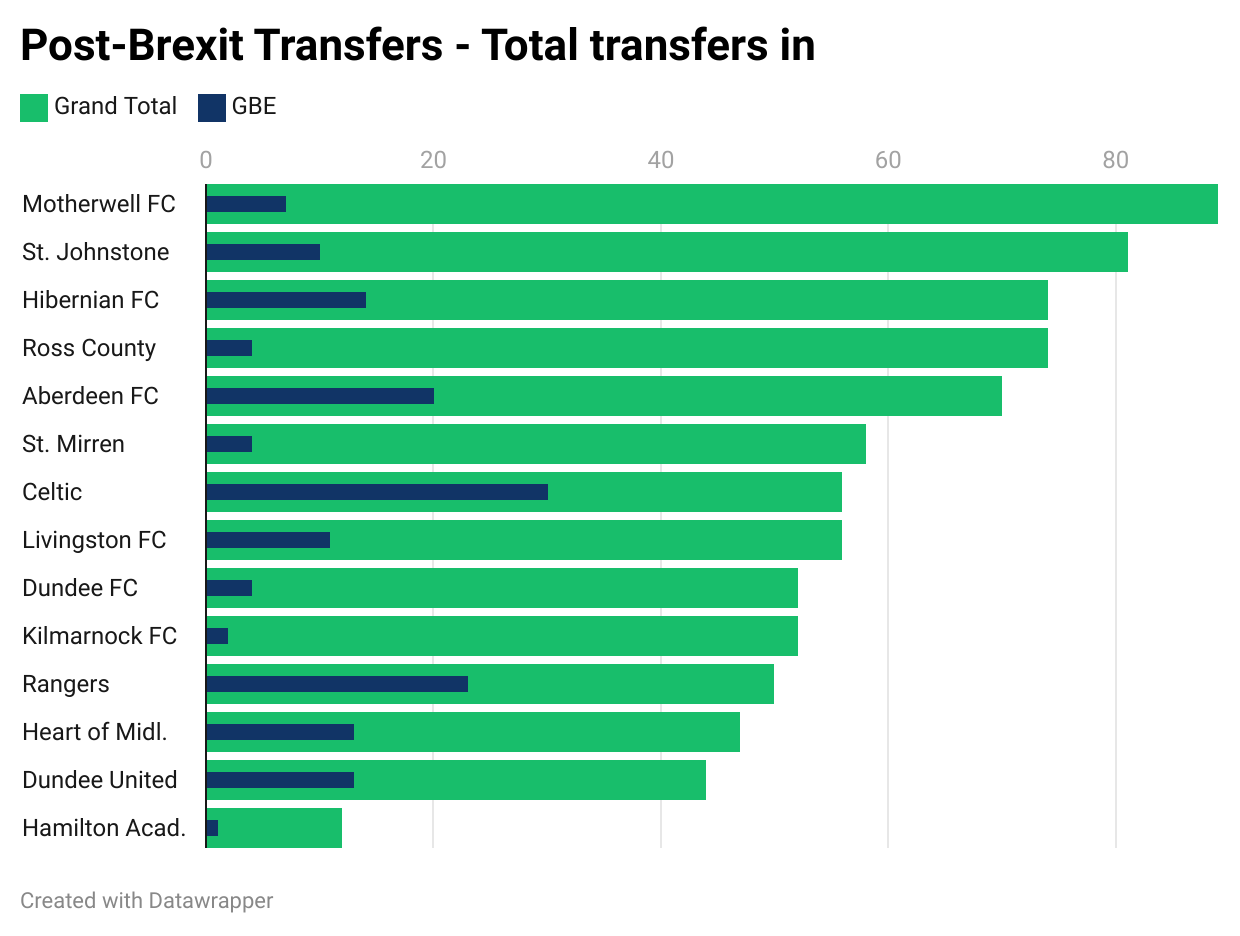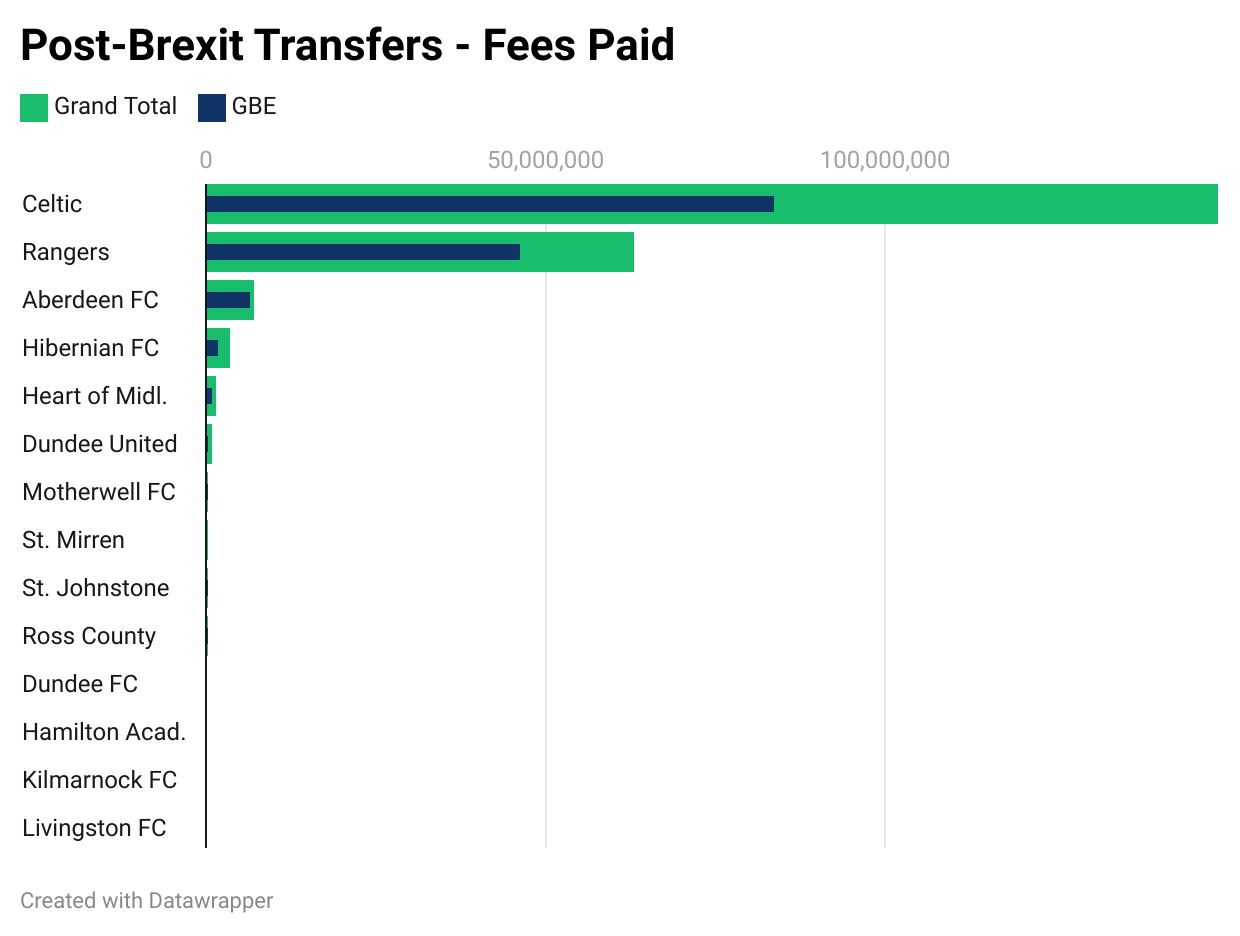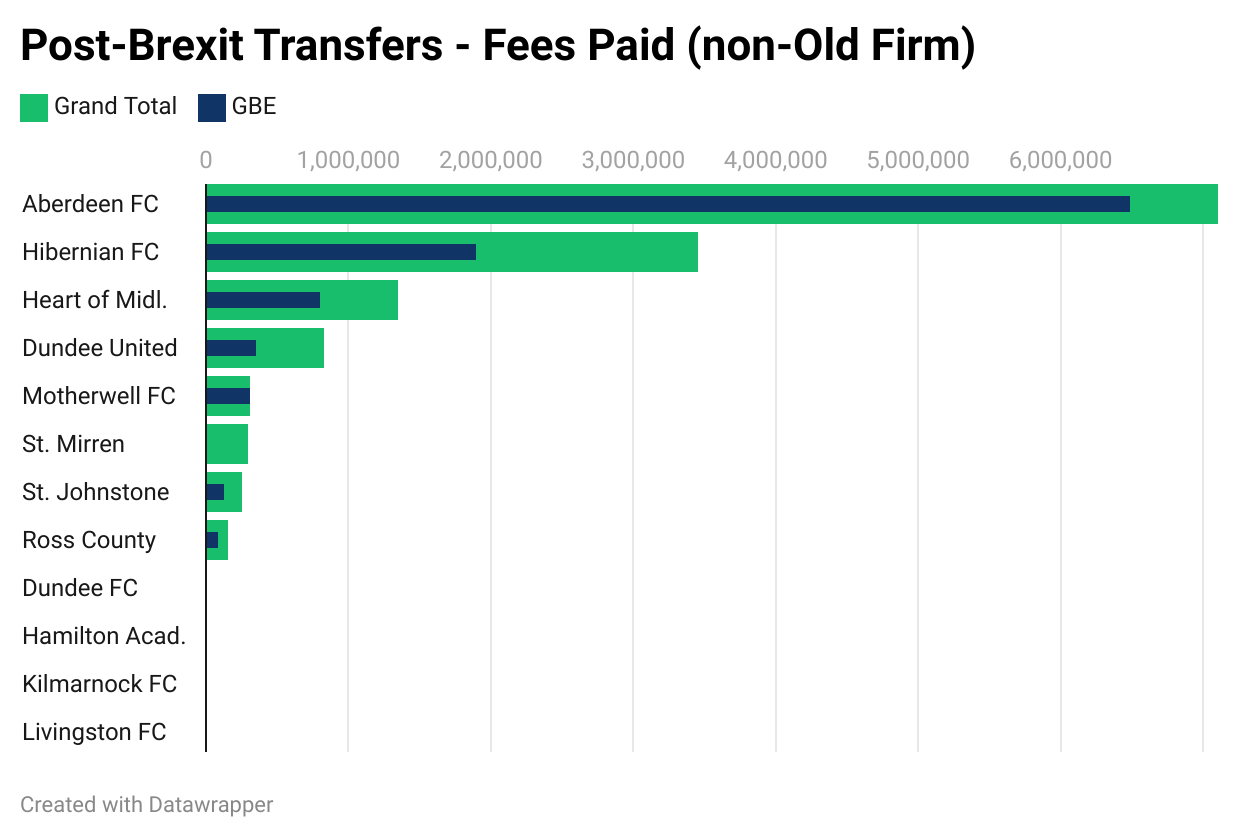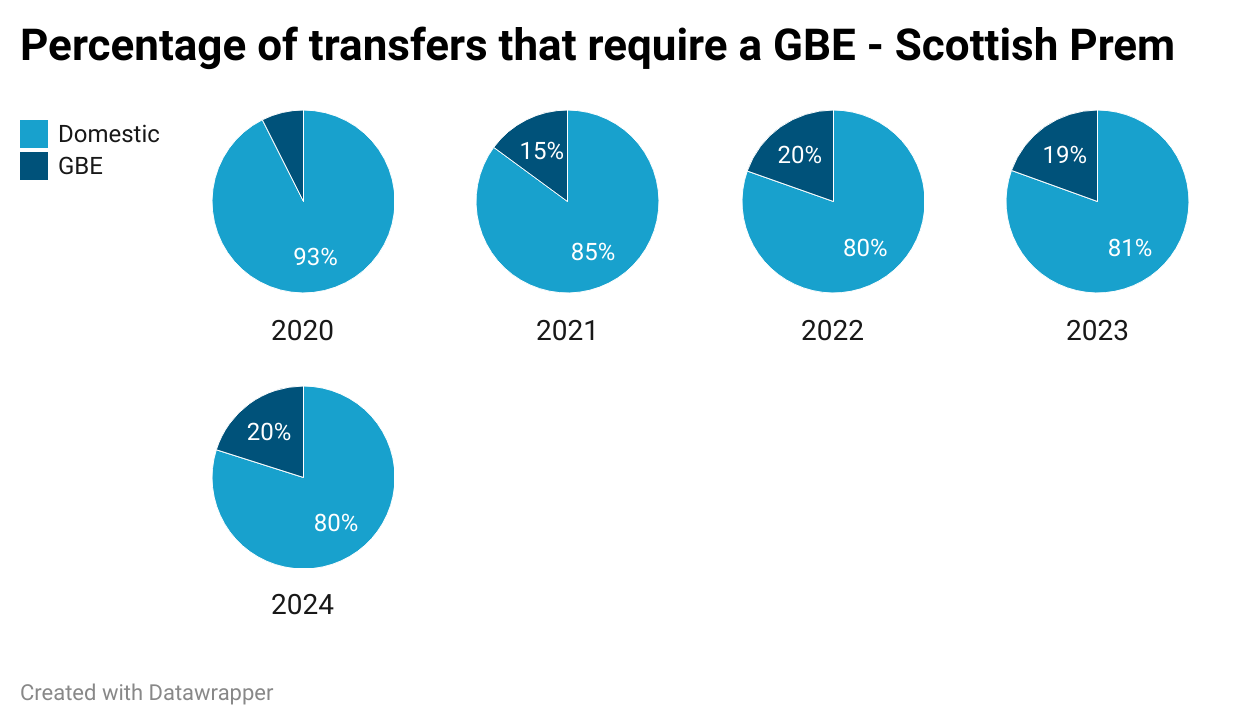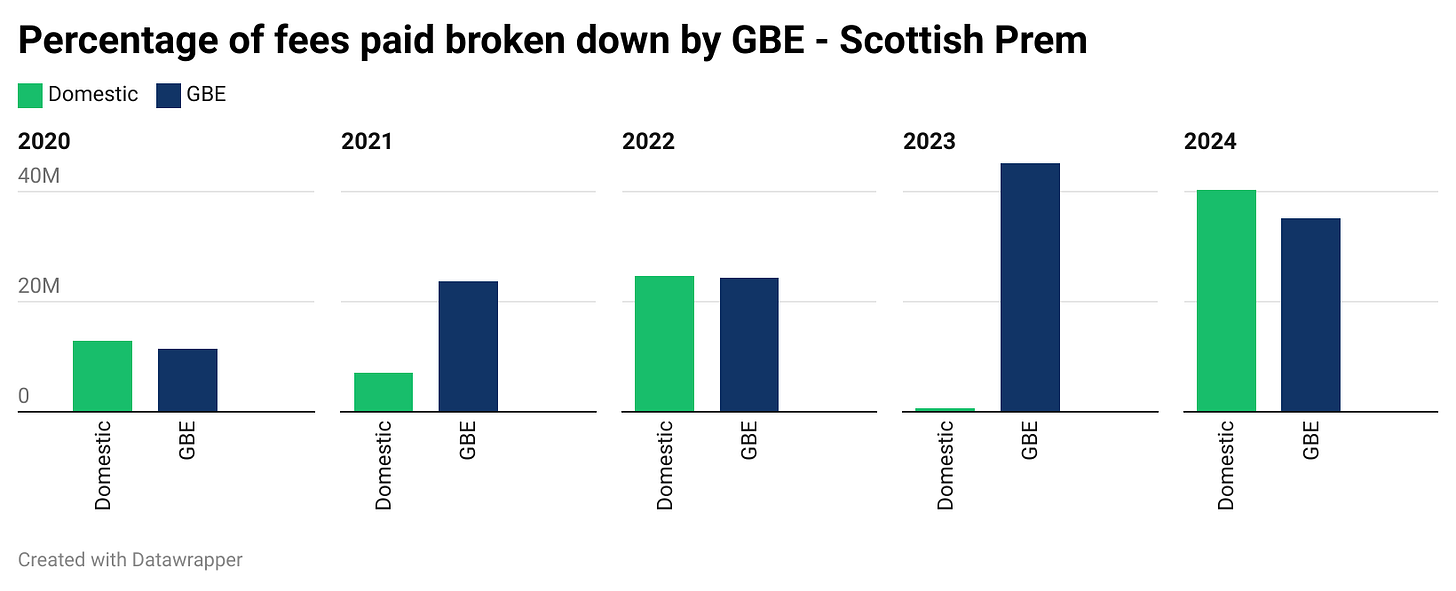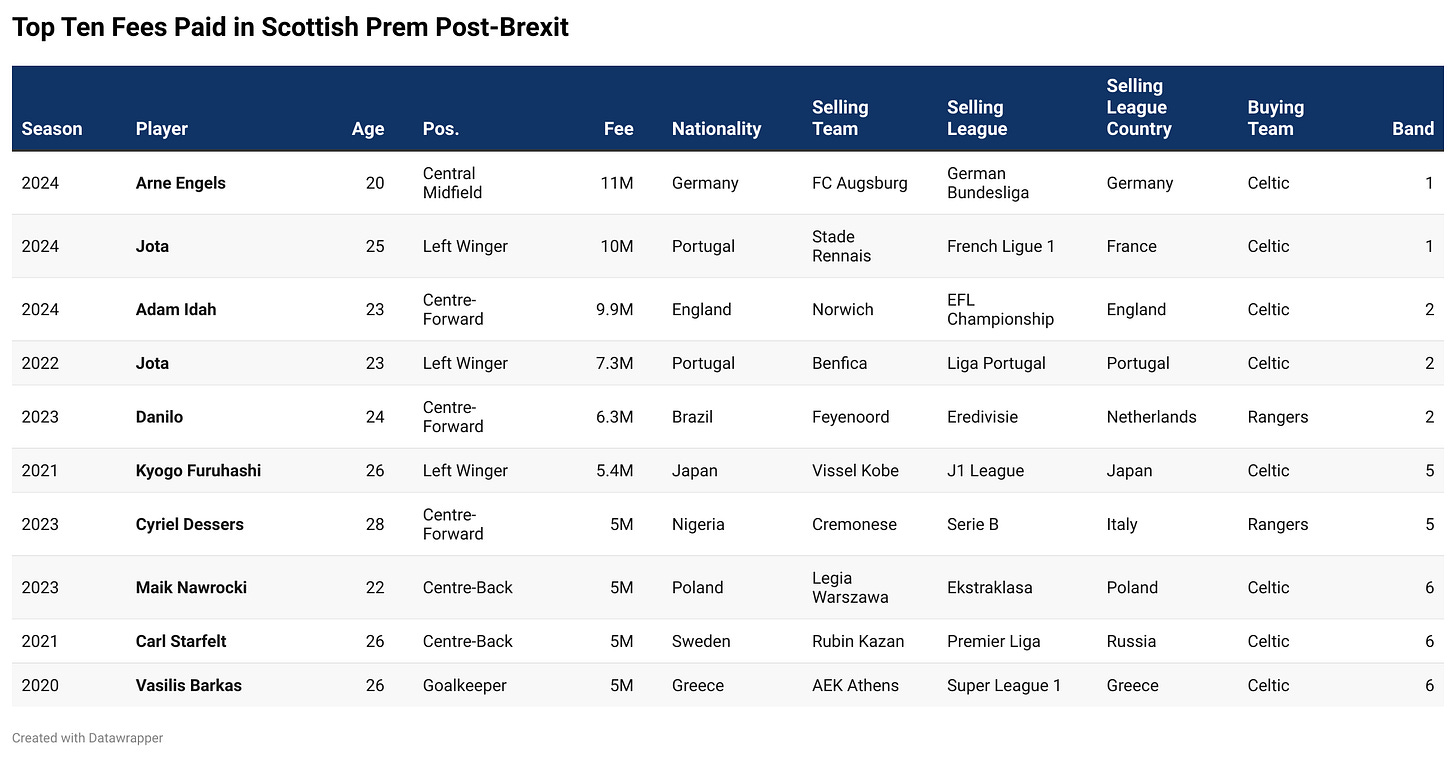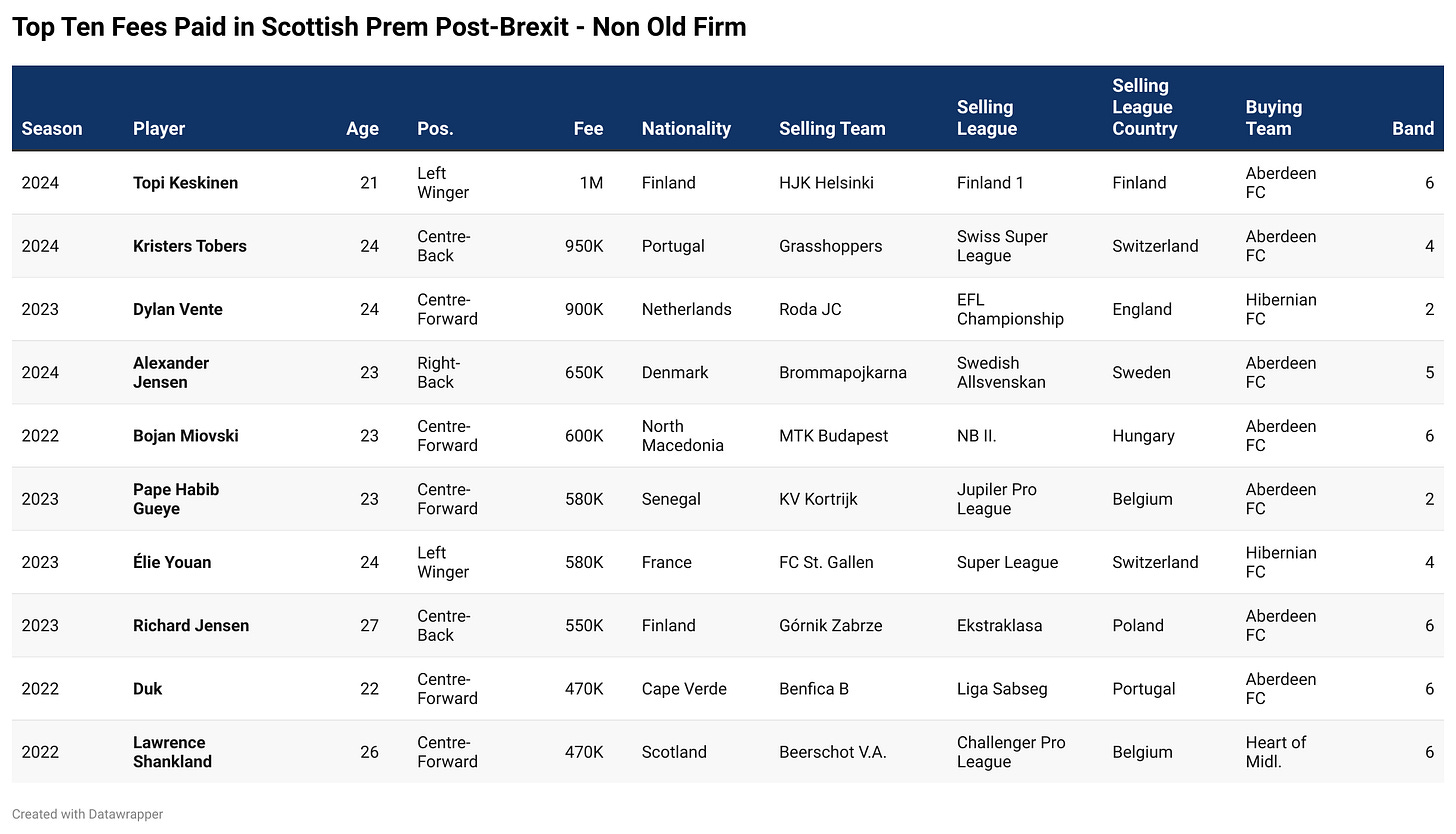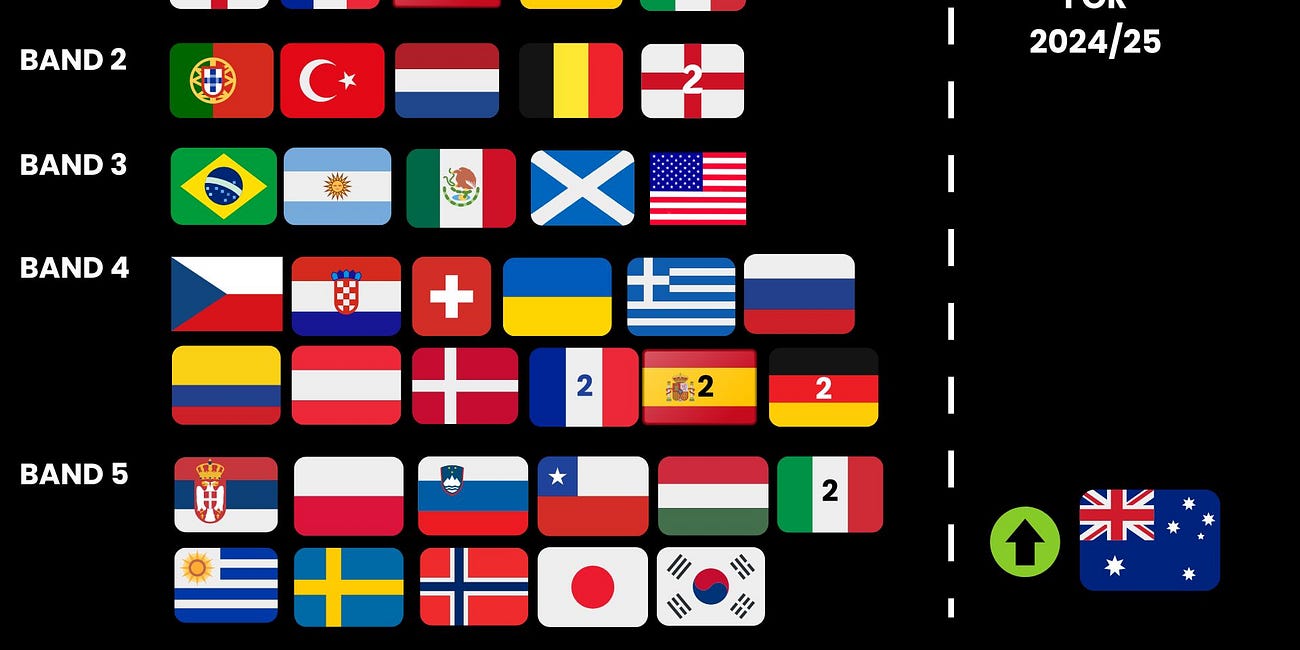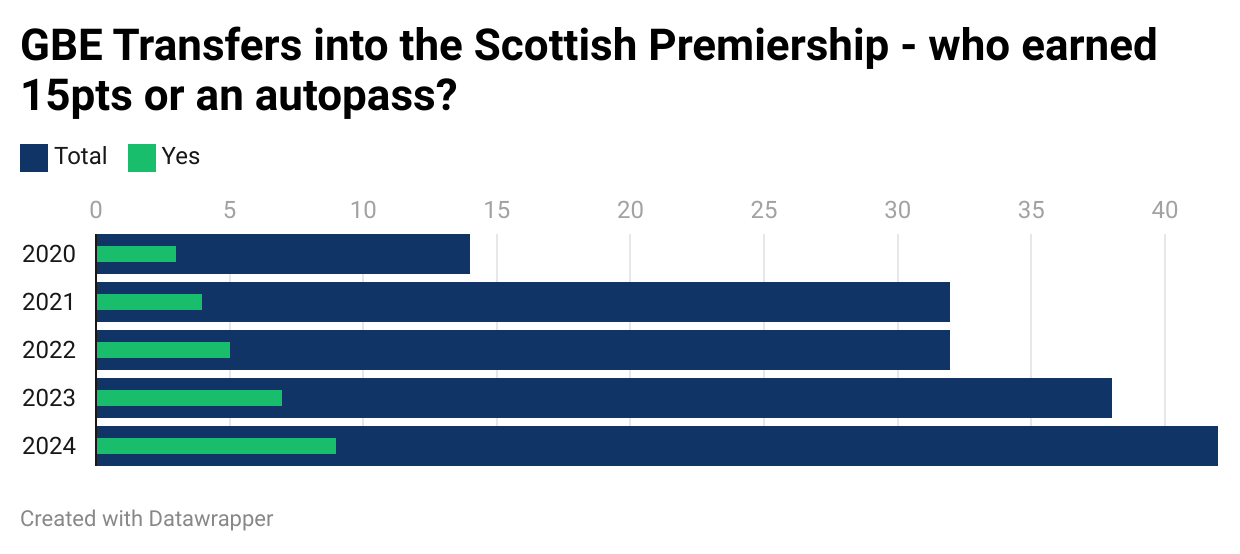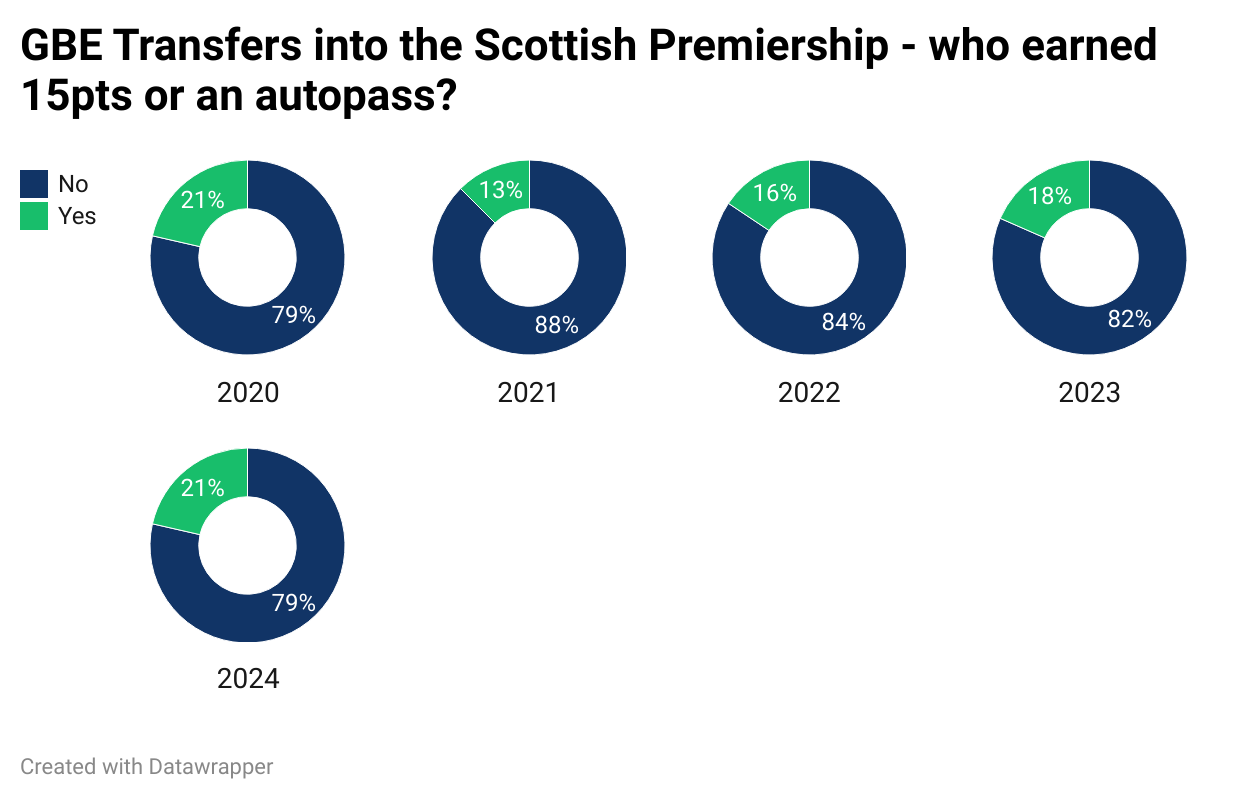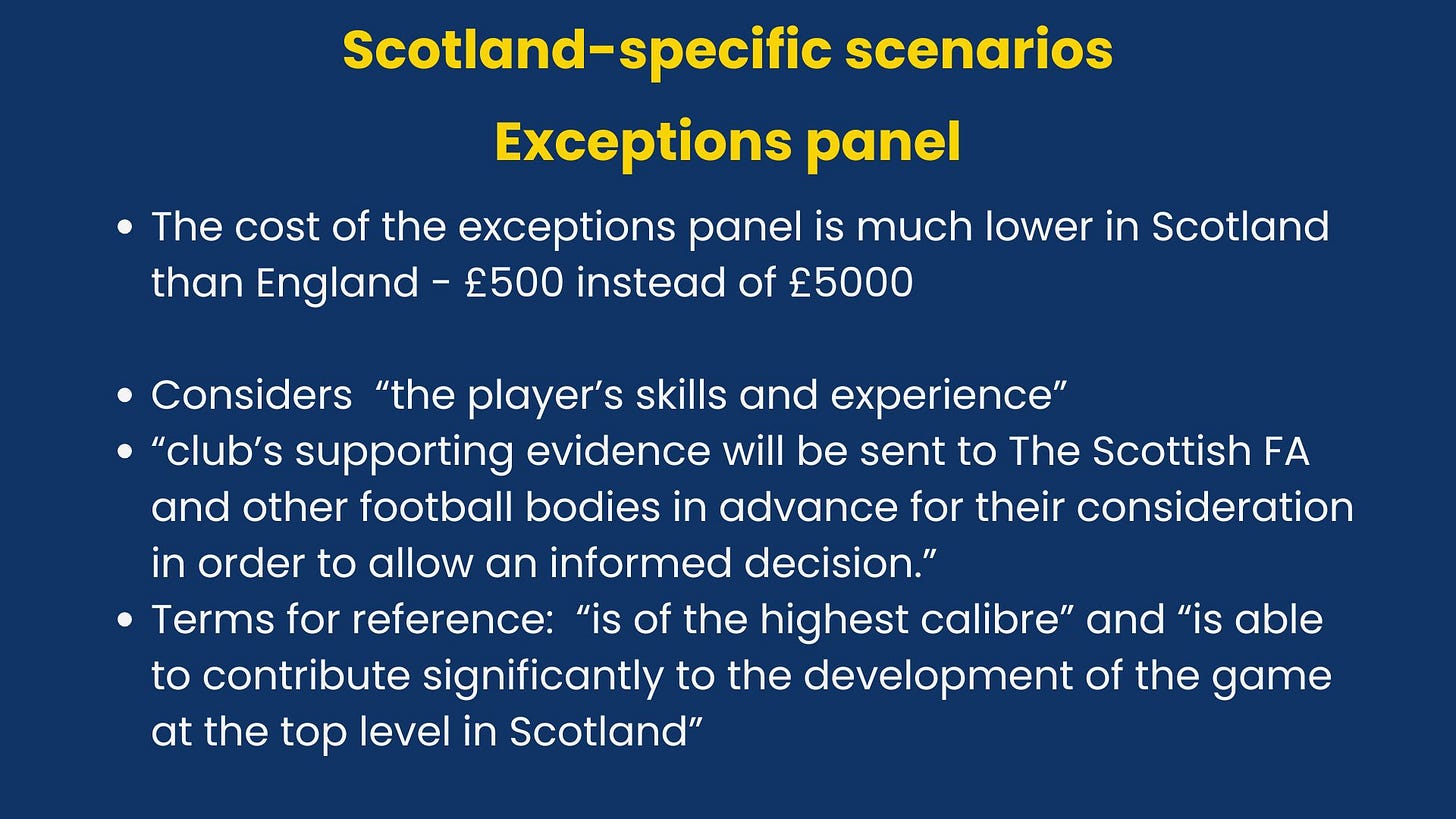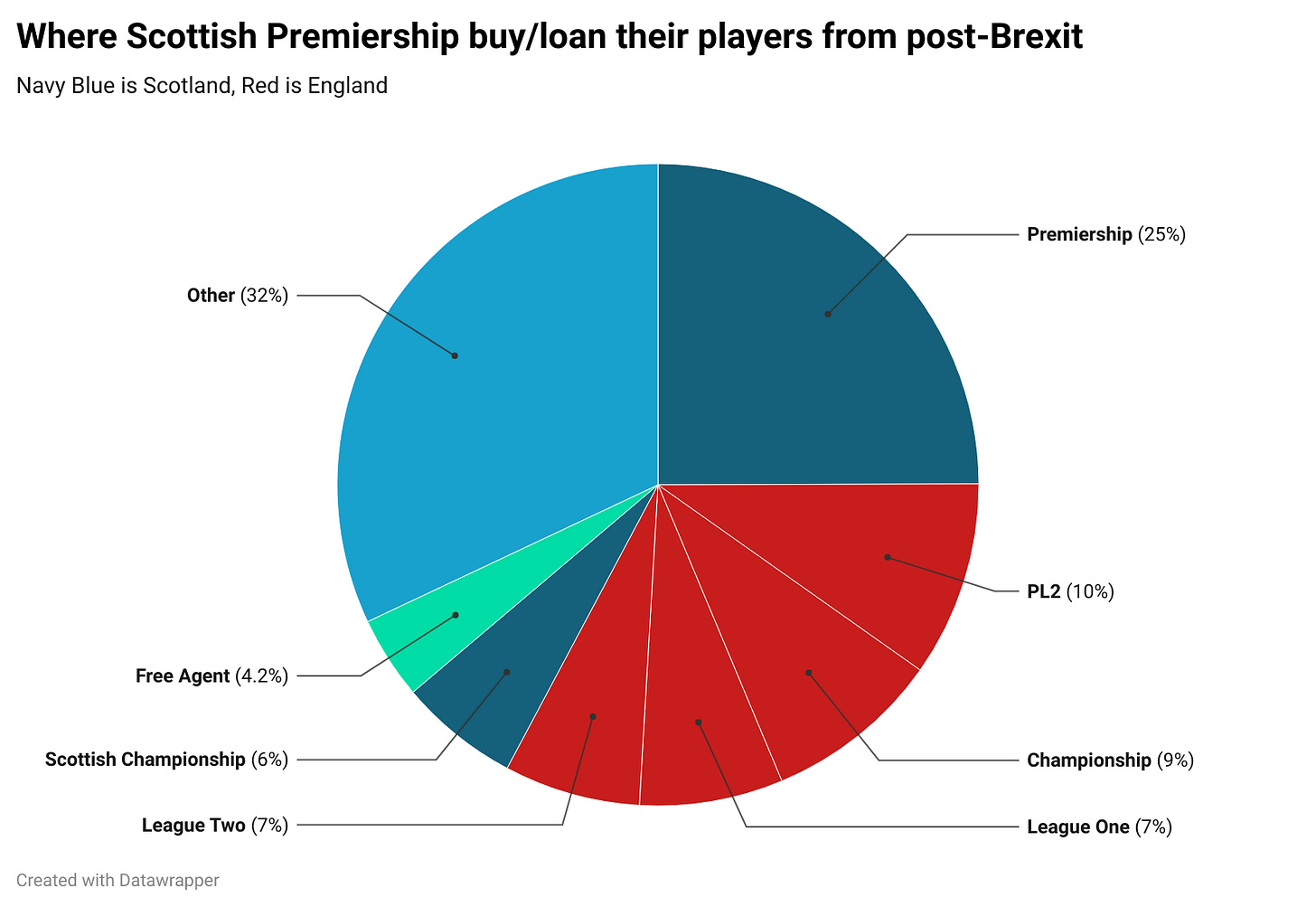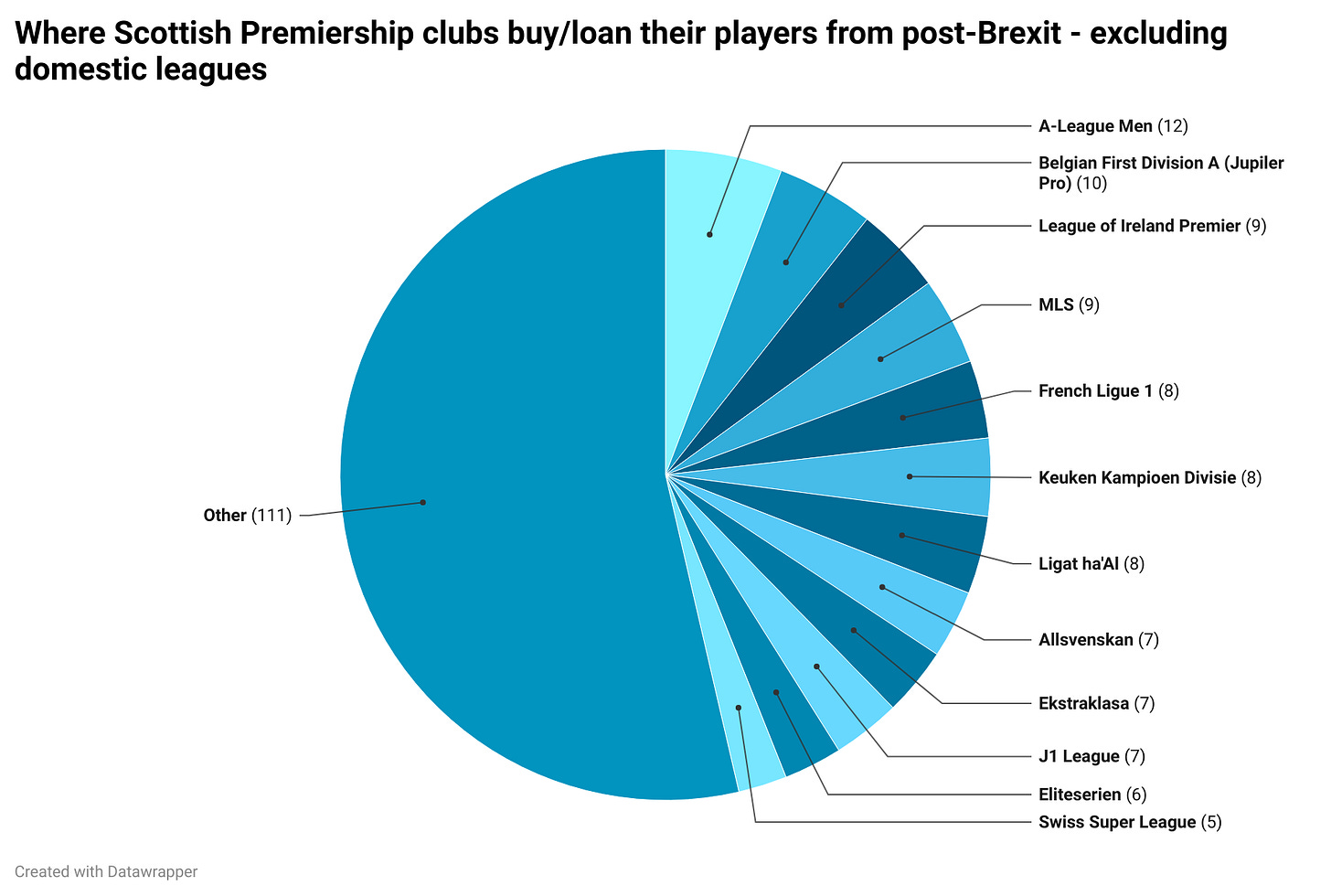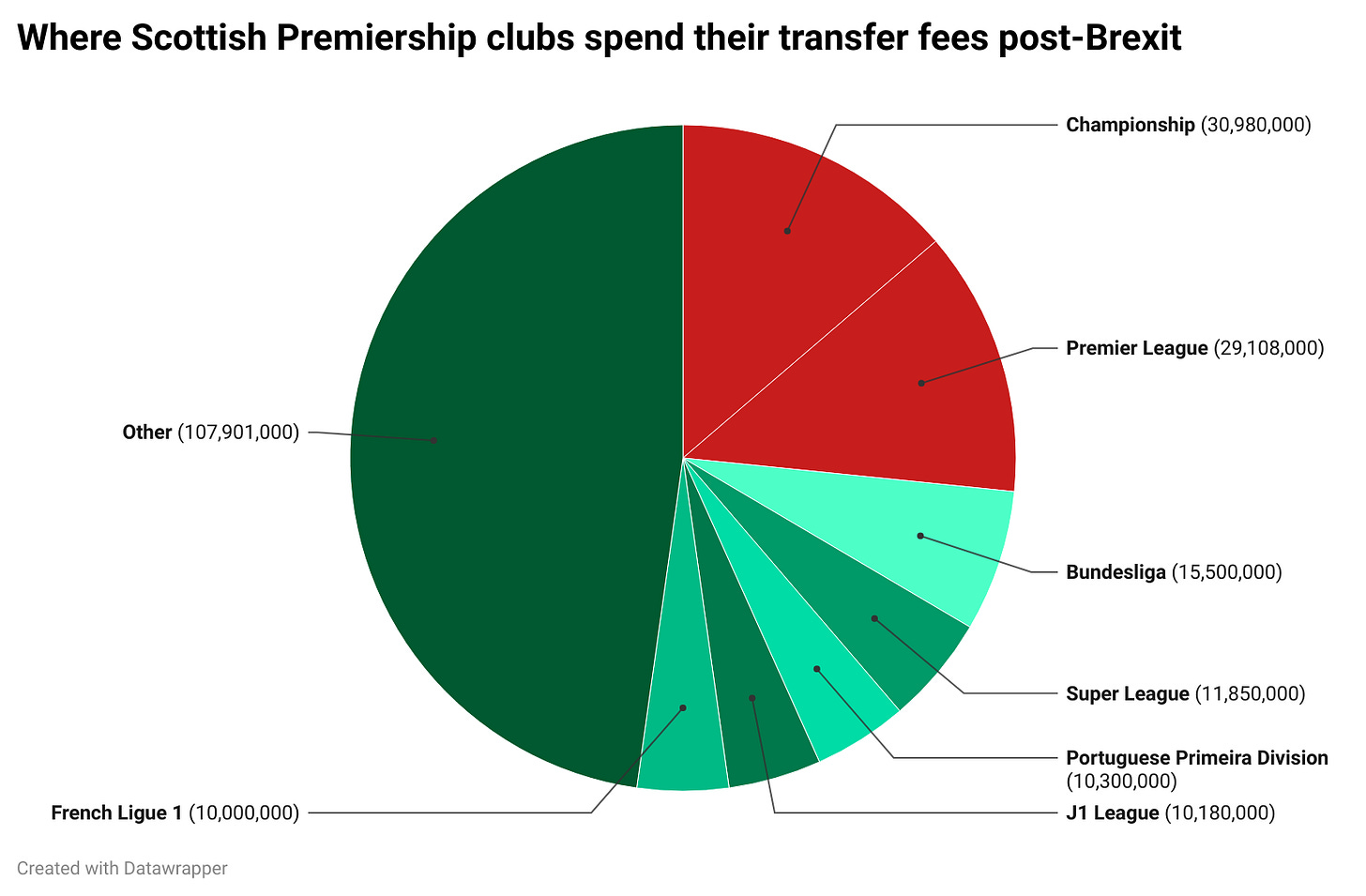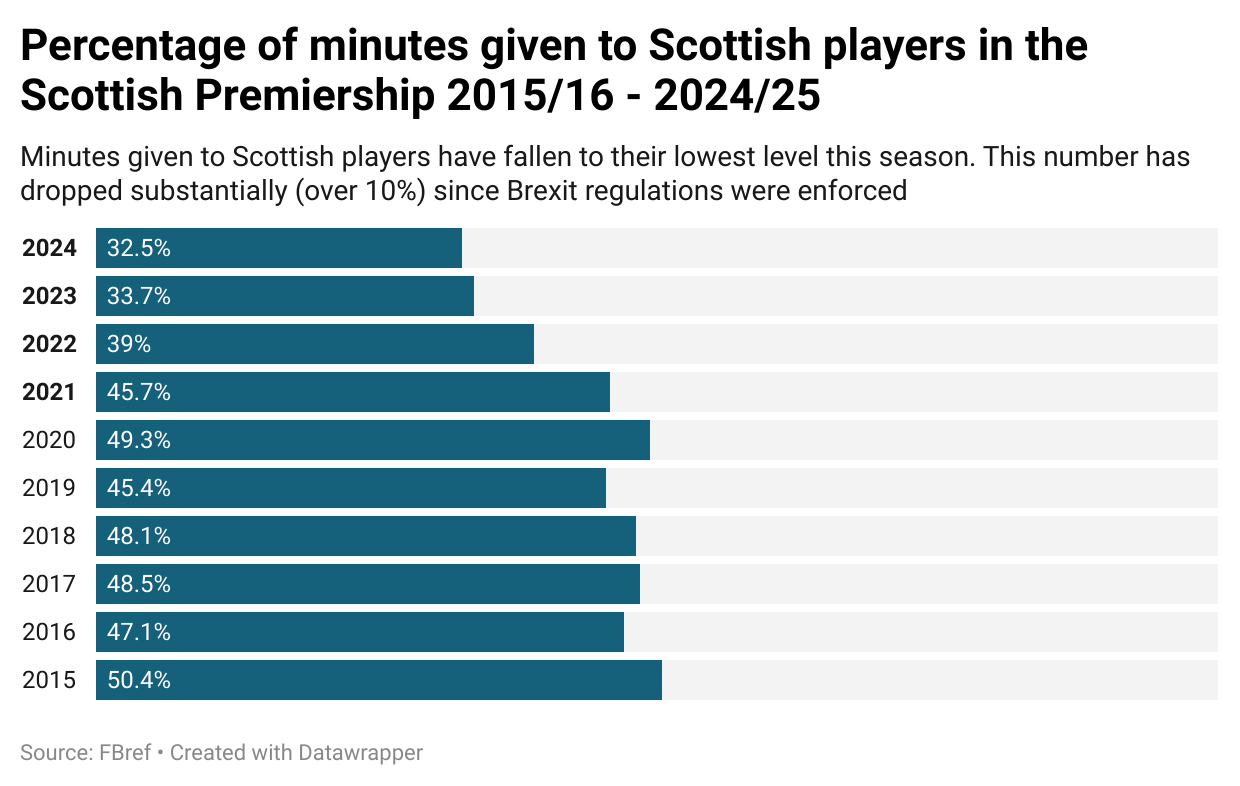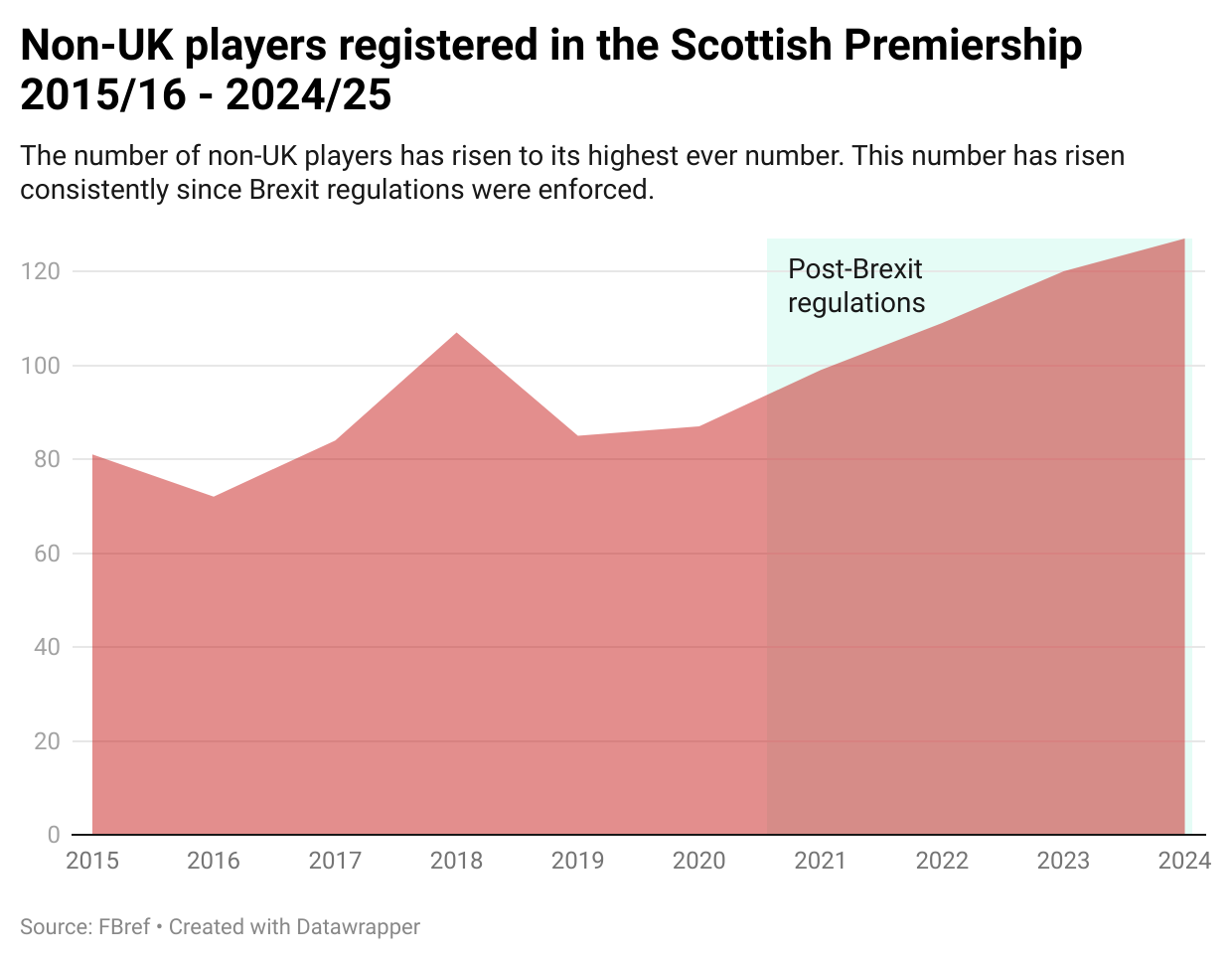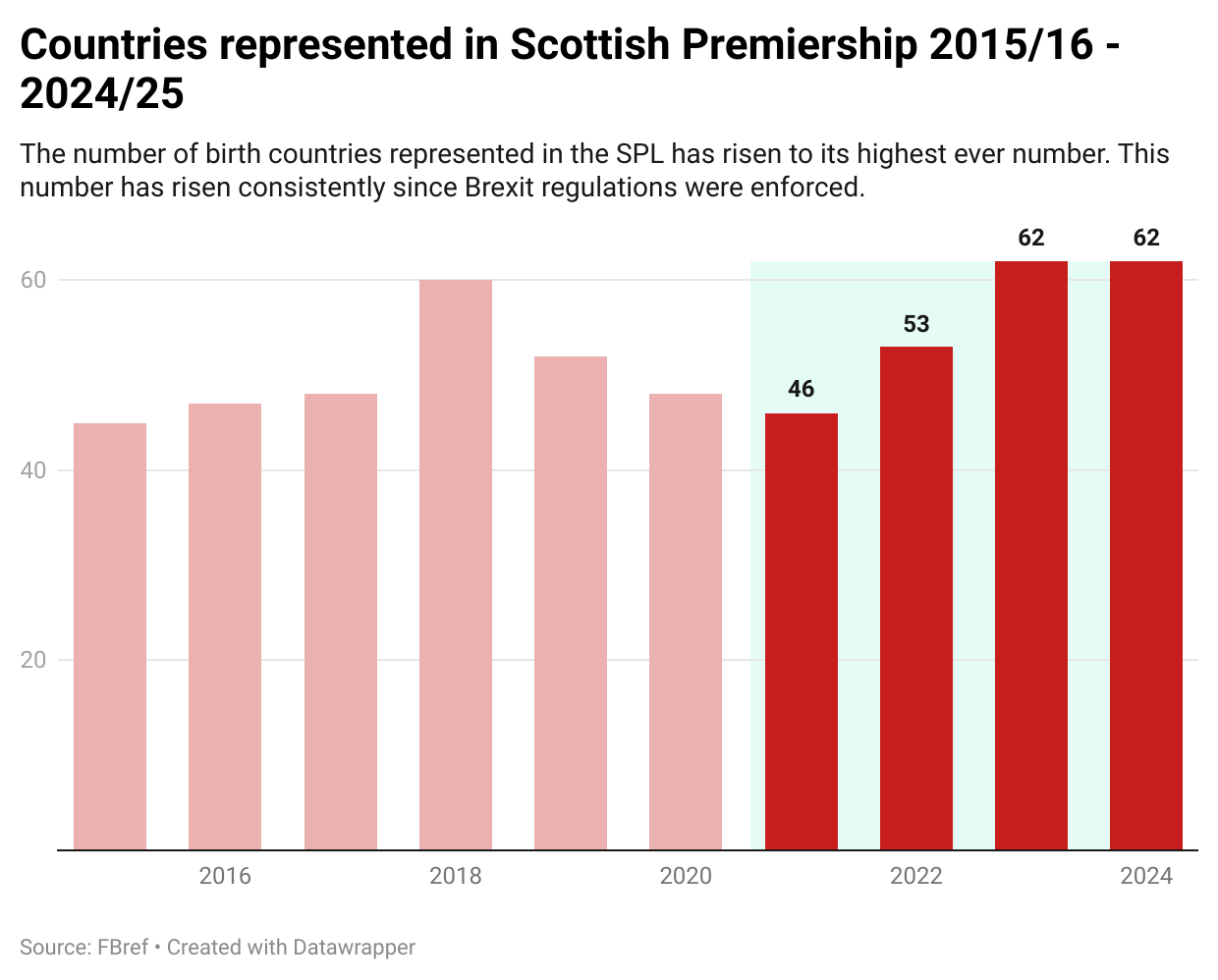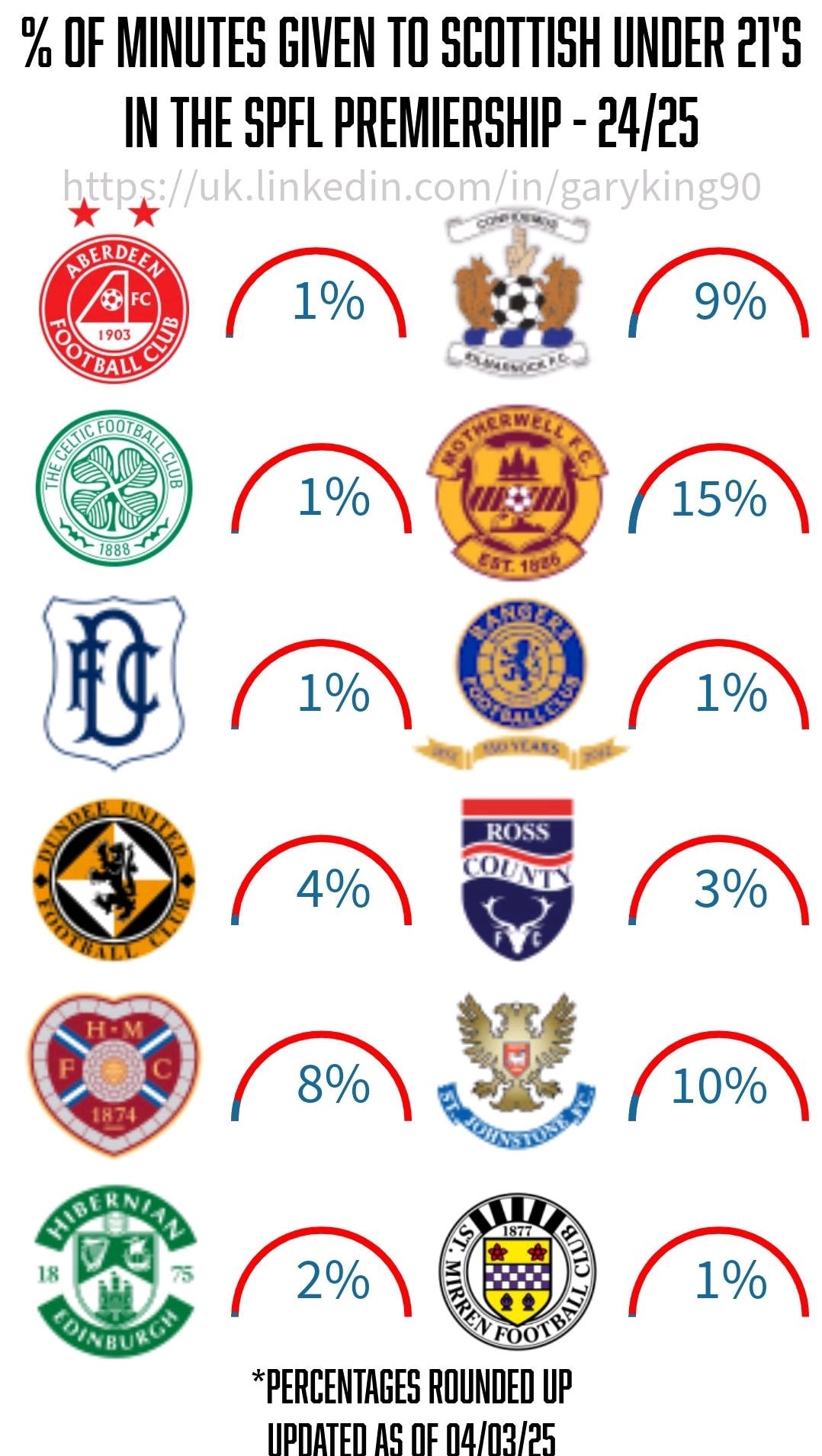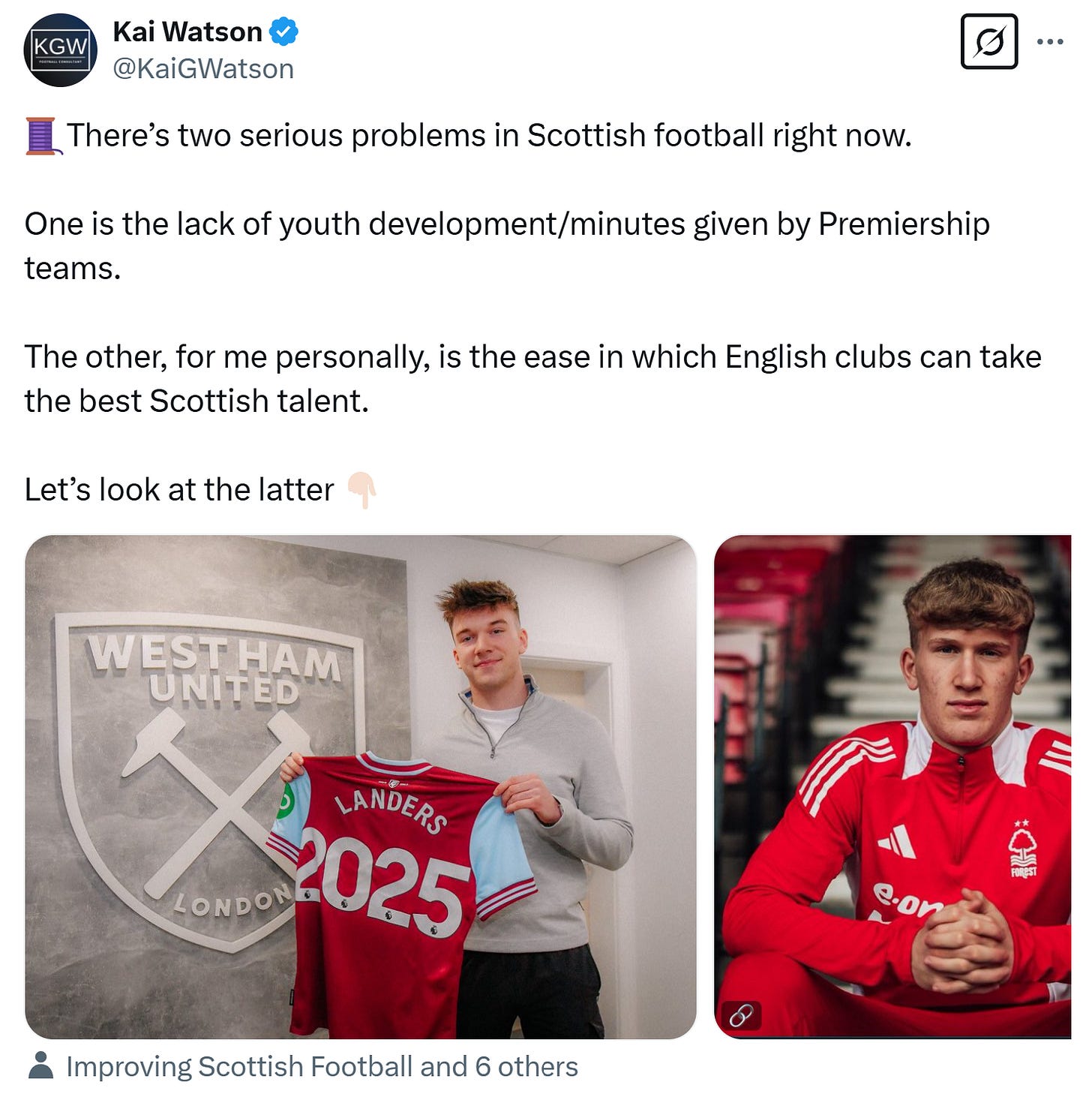Fewer Premiership minutes for Scottish players? The Scotland GBE Situation: Part 1
What is happening with GBE allocation north of the border?
Every single Scottish constituency voted to Remain in the Brexit referendum back in 2016.
Without wishing to dredge up old political wounds from that time, it is an important fact to have in your head as we look into the differences between the way that GBE has been applied in Scotland as opposed to England.
There is so much to discuss about the business north of the border, that it required me to get the good old spreadsheets out and do some number crunching.
The basics of the differences between the approach to GBE across the northern border were spelled out in one of the early pieces on the platform, so this is required reading ahead of the rest of this piece, as it will clue you into some of the key talking points to come.
I am using all of the transfers that have been made since 2020 onwards into the Scottish Premiership to compile the data you will see in this piece. The transfer information comes from Transfermarkt, and the appearance/minutes data comes from FBref.
This is the first half of two articles about this topic. The other will come out next week, but only for pro subscribers.
The overall picture of purchasing in the Scottish Premiership
The chart below counts the number of players that have been brought into SPL clubs since 2020, including the January 2025 transfer window.
The chart, and all other figures, also include loans, but not promotions from B teams, reserve teams, and youth teams.
Motherwell have been the most active club in terms of bringing players into the squad post-Brexit. However, they have also been one of the clubs who have used GBE transfers the least, certainly in comparison to their overall business.
St. Johnstone have also been very busy, and their 2024/25 business will certainly have contributed significantly to their overall and GBE signings.
It is interesting, if not a little predictable, that Celtic and Rangers have the highest number of GBE signings in the league. This is despite being in the bottom half of overall business conducted.
When we break down the business conducted into amount of money spent in fees (the undisclosed deals cannot be counted here for obvious reasons) it is clear how much of a skewed league the SPL is.
Celtic have been able to massively outspend anyone, including Rangers, and over half of their expenditure has been spent on GBE transfers. This proportion would be even bigger if not for the summer outlay on Adam Idah from Norwich, who obviously didn’t require a GBE.
Rangers’ proportional spend for GBE players is 73.5% of their overall transfer fee spend. They have not spent a single transfer fee for a player in Scotland post-Brexit, however, their signing of Connor Barron, though a free transfer according to Transfermarkt, did come with a sizeable tribunal fee (~£700k) which doesn't come through in the TM data.
Celtic did spend just over a million Euro on Luke McCowan this season, but this is one of only five transfers where money is kept in Scotland.
Kevin Nisbet (2020), Daniel MacKay (2021), Tony Watt (2021), and Dylan Levitt (2023) are the only other disclosed transfers that saw money remain in Scotland. There are also six undisclosed transfers that fit the criteria, but this doesn’t necessarily mean much money was involved.
Looking deeper into non Old Firm spending, it is Aberdeen who lead the way in terms of disclosed money spent on fees. However, their total of around 7 million Euro averages out as just over 1.4 million Euro per season, still not a great number.
The Edinburgh clubs are next, but it is noticeable that Hearts, who have played UEFA group/league stage football on multiple occasions post-Brexit have spent very little in fees.
There are four SPL clubs who are yet to spend a fee at all, according to Transfermarkt. This indicates the type of business that is being conducted in a fair percentage of the league.
How does GBE contribute to the scene in the Scottish Premiership?
We have seen a little taste of the GBE situation in the opening chart, but we are able to focus in a little bit more here.
The chart below shows the percentage of overall transfers into the Scottish Premiership the require a GBE. In the case below, ‘domestic’ refers to transfers that didn’t require a GBE, often coming from another UK country or with Great British nationality or second nationality.
The figure appears to have stabilised at around 20%, but a large number of the non-GBE transfers tend to be loans, which is something to consider.
This is particularly pertinent when we look at the following chart, which breaks down the transfers in the same way, but concentrates on the amount of money spent in transfer fees.
We know from the first section that the money spent mainly refers to what Celtic and Rangers have done in the trasnfer market, so we can bear this in mind here as well.
As we can see, the majority of money spent in the years post-Brexit has mainly gone to GBE transfers. Domestic transfers covers all of the UK, so the vast majority of the green columns actually is going to England.
Is part of the problem in the market in Scotland that so much money goes out of the league in terms of transfer fees paid?
The top transfers in by fee paid are listed above. All bar Adam Idah are GBE transfers, and all were conducted by the Old Firm clubs.
Indeed, Celtic and Rangers are responsible for the top 38(!) fees paid for transfers post-Brexit.
From a non Old Firm perspective, as we saw with the transfer fee spend chart, it is mainly a list of Aberdeen transfers. However, it is worth noting again that only Lawrence Shankland from the list didn’t require a GBE, so it is clear that Scottish Premiership clubs are prioritising spending money overseas when trying to find a player who will improve their squad.
How are the SFA processing the GBE transfers?
We know about the rules for getting a GBE by now, and if not, check out the article below for the explainer..
…but, as has probably become obvious from the charts above, there are many players who have come into the Premiership who haven't got the 15 points required for a GBE.
Indeed, when The GBE Expert Hub has looked into the transfers made, we have found that it is the majority of players that come in as a GBE that don't actually qualify for either an autopass or a 15pt pass.
The first bar chart shows that GBE transfers are increasing, they have done almost every season since the regulations came into force ahead of the January 2021 transfer window.
It is interesting because most people would have presumed that the Brexit immigration policy might've been one of tighter regulation, and therefore fewer foreign imports, but this doesn't appear to be the case.
It is also clear in the chart above that most of the players in the cohort don't pass the criteria.
The donut chart below gives us the percentages per season. At the moment it is around 20% of players that pass, the remaining ~80% must therefore come through the SFA Exceptions Panel.
The panel works very differently in Scotland than it does in England.
Firstly, the English FA have ESC in their regulations, which accounts for the vast majority of players who join clubs south of the border without the necessary GBE pass. However, it is also the case that the SFA seem to employ a lower bar in both their language, cost, and acceptance of players around the Exceptions Panel.
This is also the reason why I mentioned the original Brexit referendum at the top of the post. Shoudn’t Scotland actually be allowed to approach this differently? Is there a case of some political leaning being given to the SFA to interpret the rules that the Home Office have signed off on?
I should clearly state that there has never been any public announcement to this end and this is purely speculation on my part, but it is a theory that makes sense. The data bears out clearly that there is a big difference, so it is valid for us to discuss potential reasons as to why this may be.
What impact is this having on recruitment plans?
Obviously, the knowledge that you don’t necesarily need to find players that make the 15pt threshold has a massive impact on where you can look for players to impact your squad.
If you have read other pieces on The GBE Expert Hub then you are probably aware that the 15pt barrier is really restrictive and means that only players who are good internationals, playing regularly in top European leagues, and in UEFA/CONMEBOL continental action can really be expected to get a straight GBE.
So, whilst Celtic and Rangers may still be able to shop in that market from a financial and a UEFA competition perspective, the rest of Scotland needs that generosity from the SFA to make foreign recruitment possible.
The first chart here breaks down where players have come from in Scottish Premiership recruitment. This chart includes loans, which is important to bear in mind, as a lot of English clubs loan into Scotland and it probably is skewing the data in that way.
We can see in the chart that outside of the Scottish Premiership itself, which is one club buying from another, or, more likely, taking a Premiership player who is out of contract, it is English leagues that take up a lot of the recruitment of Scottish Premiership clubs.
It is interesting that PL2 comes in as the most used non-Scottish league. As mentioned above, a lot of this will be in the form of loans. League One and League Two also come in ahead of any other Scottish league, which shows where the leagues tend to lie from a quality perspective.
No foreign leagues enter the chart here, so it is worth taking out all domestic leagues and free agents to have a look at the picture in foreign leagues.
The reason why no foreign leagues appear on the first chart is because the business is so fractured across the world.
The A League is the league that has been recruited more than any other outside of the UK, even above Ireland. However, it is clear to see that there is huge variation across the world, the bandings that the FA and SFA have put into place seem to have little bearing in where recruitment teams are looking to improve their lot.
Band 5 (Australia), Band 2 (Belgium), Band 3 (MLS), Band 1 (France), and Band 6 (Netherlands 2 & Israel), fill the first six places of the chart.
There are over 120 different leagues that make up the recruitment of the league in the last five seasons.
Breaking the information down in terms of spending lends a new dimension to the business.
It is England that benefits well from Scottish spending here. The Championship and Premier League have both sold around 30m Euro of talent into the Scottish Premiership post-Brexit.
Outside of this it is quite disparate again, with Japan’s appearance in the top few leagues mainly owing to Ange Postecoglou’s Celtic reign, and Portugal appearing mainly because of Jota.
Again, over 107m Euro is across many different leagues, but it is noticeable that despite the Premiership being the biggest league in terms of numbers of players, as we saw in the previous chart, the league is nowhere to be seen here.
In fact, the Scottish Premiership is down in 30th place for transfer fees received by Scottish Premiership clubs. This is a heck of a lot of money going outside of the league.
What impact is this having on Scottish players in the Scottish Premiership?
One of the main talking points from this research, and in a lot of Scottish football spheres since January, is what impact this foreign recruitment is having on Scottish players.
Running the data on FBref over the last decade, it is not a happy picture for those who like to see Scottish players playing in the top division of Scotland.
The last season that saw over 50% of minutes given to Scottish players was in 2015/16. Since then, the numbers stayed pretty solid around the 50% mark, until, 2021.
Whether this is solely due to Brexit regulations, or whether some of it could be blamed on post-COVID, or any other reason, there has clearly been a massive drop off of minutes played by Scottish players in the last four seasons, down to a low of just under a third this season.
This trend is also reflected in the number of Scottish players registered in the Premiership. This data is also from FBref. Scottish representation by player is now down at its lowest number in a decade.
Unsurprisingly, this means that non-UK players registered in the Scottish Premiership is on the rise. Indeed, the rise has been pretty consistent post-Brexit, to a level that is the highest that it has been in a decade. This chart removes English, Welsh, Northern Irish, and Irish players.
There is a more cosmopolitan feel to the league. More countries are represented in the players registered in the competition than previously.
This is the data as presented without theory or judgement. There are reasons why this could be a positive for the Scottish game, but there are also reasons why this could be negative as well.
Gary King, a scout at Stenhousemuir, on LinkedIn gained a lot of traction on the social media platform recently by posting the percentage of Scottish Under 21 minutes given by the Scottish Premiership teams this season. This certainly instigates some debate around the policies of the SFA.
Kai Watson also produced an interesting thread on this discussion on Twitter, naming Brexit as a key driver, but from an English perspective, perhaps suggesting that England are taking young Scottish talent early as a result of Brexit.
//x.com/KaiGWatson/status/1892242573537739046?t=23hZZ4dDmTXI7uzKpXQ_Pg&s=19
There are other interesting accounts that have taken the baton to try and improve Scottish football as well, including Improving Scottish Football and ScottishFootball.info whose Substack is worth checking out.
As a closing remark on this topic, however, I would have some words of caution around criticising the SFA as a result of their policies around GBE.
It would be interesting to see what could happen if an ESC document was brought into Scotland, perhaps allowing the Exceptions Panel to then become more strictly applied, but this isn’t the route that has been decided upon.
Scotland’s coefficient has been strong in recent years, reaching the top ten as a result of Rangers’ run to the UEFA Europa League final recently. Celtic’s Champions League campaign, Rangers’ current Europa League campaign, and Hearts’ presence in the group/league stages of UEFA competition show that Scotland’s clubs can compete on the European stage, but is there a case for more Scottish teams to do better.
The SFA has to balance the strength of the national teams alongside the strength of their clubs and competitions, and any decisions taken can only be assessed in the fullness of time, often years after decisions have been made.
Recent changes to the system involving B teams and partnership loans will become another key cog in this development, and it will be interesting to see how this works.
The percentage of minutes being given to Scottish players in the SPL is low, but it is still higher than the percentage of minutes given to English players in the Premier League. There is an argument that having a higher quality league actually develops domestic talent to a higher level given that competition, certainly there doesn’t yet seem to be a engative effect on the production of English talent due to the Premier League being the ultimate destination for much of the world’s best talent.
Scotland is a different situation of course, and there are financial issues at play as well. Why does the transfer system not work as well as the likes of many of Scotland’s rivals in Europe?
This is an issue that we take into our next major article next week…
Please comment on this article, it would be great to hear your thoughts on this.


